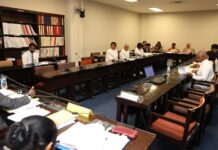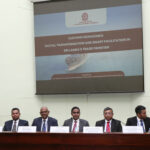Action has to be two-fold as immediate and long-term. The Immediate ones are necessary to roll over the issues of debt burden and weak reserve position as the government is doing right now. The immediate measures include further borrowings either from bilateral sources or multilateral sources as well as saving the little foreign exchange that we earn, states Professor in Economics, University of Colombo, Sirimal Abeyratne as measures to boost fiscal consolidation.
However, he said the problem is that these immediate measures can help only to roll over the situation by delaying the worst situations, but, thereafter, they can become counter-productive. That’s exactly why the country needs long-term measures to turn the economy in the right direction.
According to the Central Bank, the government has commenced negotiations for contingency funding from certain regional countries and partners in the Middle East. The Central Bank completed a currency swap arrangement with the People’s Bank of China (PBOC) amounting to CNY 10 billion, equivalent to approximately US dollars 1.5 billion.
However, according to Prof. Abeyratne, the current problem is not necessarily due to the Covid pandemic issue because even without the pandemic Sri Lanka was heading towards it. The pandemic has only quickened it.
Therefore, recovery does not help the country, as it needs to move beyond recovery by creating an enabling policy and regulatory framework and building up investor confidence. This is necessary to accelerate investment, attract FDI, and sustain higher economic growth and exports.
Only with this, can the debt burden be relieved and the reserve position strengthened. It would also help government to consolidate its fiscal position. The BOI targets USD 2 billion in foreign direct investments this year up from last year’s USD 1.5 billion realized investments.
Meanwhile, a former Central Bank Deputy Governor, W. A. Wijewardena said the country’s debt burden could be addressed if the Government prunes consumption expenditure, stops borrowings from the Central Bank and commercial banks and promotes revenue earnings from exports and foreign direct investments.
The Government debt to GDP ratio rose to 86.8 per cent at end 2019 from 83.7 per cent in the previous year.
Rating agencies predict it to rise to over 100 per cent by end 2021.












